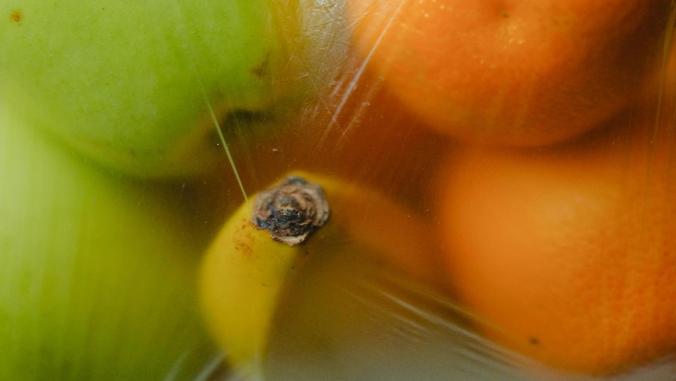Companies have turned to carbon offsetting projects to compensate for their greenhouse gas emissions for more than a decade, but the phase "carbon insetting" features less frequently in corporate sustainability plans. It refers to when a firm invests in projects that generate carbon removals and emissions reductions within its extended value chain, for instance through regenerative agriculture programs, forest conservation projects or providing clean technologies to households in farming communities.
Luxury fashion brands Kering and Chanel, beauty behemoth L'Oréal, coffee giant Nespresso and hotels chain Accor are all long-term proponents of insetting, and are hoping to push the approach into the mainstream. The companies are founding members of the International Platform for Insetting, a Paris-based organization looking to encourage more companies to tackle their Scope 3 value chain emissions by investing in emissions reduction projects that sit within their supply chains. As such, the approach differs to the large majority of carbon offsetting projects, which typically have no direct connection to the business that purchases them, in terms of geography or supply chain.
In contrast, insetting interventions typically take place at the farms that supply big companies, but can also extend to deliver benefits to the wider community around the farm, or even in adjacent landscapes, IPI director Sandra Brandt tells BusinessGreen. "It's really about investing into a company sourcing area, with a view to create more sustainable production processes of raw materials, while also creating healthy ecosystems and generating positive impact on [local] livelihoods," she explained.
It is really critical that these investments of insetting will count toward science-based targets.
Some companies could arguably claim to have engaged unwittingly in some form of insetting already via sustainability ventures in their broader supply chains, but the IPI hopes that growing awareness about insetting will encourage more firms to embrace a "holistic and integrated approach" when considering how to reduce the emissions generated within their value chains. The group has today published its first guide to insetting, in a bid to encourage more companies around the world to tap the approach.
Brandt reflected that insetting is as much a practice as it is a "philosophy." "There's such a wide breadth of different types of interventions [companies can take]," she said. "It's about taking this to climate action that puts nature-based solutions at the center." Projects are conceived to unlock a host of social and environmental benefits beyond decarbonization, she explained.
For instance, Nespresso's insetting program has centered on tree-planting schemes in smallholder farms in Colombia, Ethiopia and Guatemala where it sources its coffee. On top of storing carbon, the trees planted through the program protect soil, boost local biodiversity and provide new income opportunities to farmers from timber and fruits, according to the company. Accor, meanwhile, has been encouraging its food suppliers to transition to regenerative agriculture practices that boost soil health and its ability to sequester carbon.
Julie Reneau, sustainability strategy and stakeholder relationship manager at Nespresso, told BusinessGreen that insetting had allowed the company to leverage the company's decarbonization objective to unlock a host of other benefits for the environment and local communities. "It allows us to go the extra mile," she reflected. "At the end of the day, what those big trees deliver is ecosystem services that go beyond carbon. Even if you put a dollar value to it, the dollar value on water and on biodiversity would be much bigger than carbon."
However, Reneau also noted that carbon offered a good metric for measuring the impact of proposed and existing schemes, noting that emissions reduction is a metric increasingly well understood by shareholders, board members and standards bodies as the net zero transition gathers pace. "It is easy, it is business language, you can put a dollar value to it," she said. Her comments were echoed by Brandt, who said carbon was the "enabler" of insetting projects. "It basically brings the funding mechanism," she said.
The IPI's new insetting guide guide sets out recommendations for how companies can make the business case for insetting and get key stakeholders on board, how they can establish a scalable governance model to support projects and how to clinch finance for projects. It also covers how businesses can work with external partners to deliver insetting successfully, and how to select those partners and get the most out them.
Brandt dubbed the 37-page document as a "masterclass in insetting," noting that it would "give companies practical tools that will enable them to transform and deliver against their ambitious targets."
Insetting may look different at every company, but there are broad lessons that will benefit all firms looking to scale the approach, Brandt stressed. "While every company has their own journey within insetting depending on how in what role insetting plays within that overall sustainability strategy, we also still see that that we had a lot in common," she said. "Insetting has a strong focus on nature-based solutions and a way to harmonize corporate operations with ecosystems."
Insetting schemes by IPI members to date have largely focused on nature-based solutions, with all corporate pioneers of the approach relying heavily on land within their supply chains. But there is potential for insetting to extend beyond agricultural supply chains, according to Brandt. "We've seen some great discussions around insetting at a factory level," she said. "For example, about pooling resources and bringing together different stakeholders to jointly drive the transformation of production processes."
Looking to the future, the IPI is hoping to have insetting better recognized by international carbon reduction frameworks, for instance the Science-Based Targets Initiative (SBTi), and the guide calls on companies to collectively advocate for greater recognition of the benefits of the approach by standards setters and regulators.
Clear accounting rules setting set out how the climate benefits of insetting interventions can be claimed against climate frameworks should also help bolster the business case for insetting, Brandt noted. "In order to really help to scale these investments, and to get more companies looking into the insetting approach, it is really critical that these investments of insetting will count toward science-based targets," she said. "We see there is there still a gap on clear methods and guidance for companies on how to claim in particular the generated carbon benefits of inserting interventions, and how these fit into the different climate frameworks, such as science-based targets and net zero."
Insetting interventions typically take place at the farms that supply big companies, but can also extend to deliver benefits to the wider community around the farm.
The guide concedes that the absence of an "aligned and recognized definition of insetting" is a major barrier to the practice being recognized by the Science Based Targets initiative (SBTi) but notes the release of GHG Protocol Removals Guidance and SBTi Flag project set to be released later this year will bring some more clarity on these accounting challenges.
More formal recognition of the benefits of insetting by existing carbon standards will significantly bolster the business case for insetting projects, Reneau said. "When it comes to nature-based solutions, you have this tension between the fact you pay today for something that takes 30 years to happen. Yes, there's an exponential curve of the sequestration and biomass and growth of tree... But it is a hurdle we need to find a solution for. It's like governments; the president wants to see things happening during their presidency, not in 15 years' time."
For now, the IPI hopes its new guide will help spread the word about insetting and spur more companies to sign up to its platform and start designing their own insetting interventions. "One of the beauties of our initiative is that is it has this cross-sector approach, which brings a great diversity of different supply chains, commodities, and really different types of practical experience," Brandt reflected. "With different agricultural supply chains comes different types of insetting interventions and experience. From regenerative agriculture to big restoration projects in adjacent landscapes, there is really a wide scope for what is possible."






